Bigeye Tuna
Species Description
Bigeye tuna are similar in general appearance to yellowfin tuna (especially as juveniles) and even share the same name, "ahi", in Hawaiian. Both bigeye and yellowfin tuna have bright yellow dorsal fins, but bigeye can be distinguished by its plumper body, its larger head and its unusually large eyes!
Bigeye tuna have a dark, metallic blue colouration on the top of their body, and are white on the underside, which provides camouflage in the ocean when hunting for prey. Prey looking up below the tuna will not be able to distinguish the fish from the glare of the surface water. Likewise, prey from above will not be able to see the tuna as the dark blue colour on the fish blends in with the darkness from the deep. This is also known as countershading, and is seen across many marine animals.
Bigeye tuna can be found in the warm, tropical waters in the Atlantic, Pacific and Indian Oceans, and are migratory, meaning they can travel long distances. They are a relatively fast-growing tuna species, reaching up to 2.5 m (8.2 feet) in length, though they average at 1.8 m (5.9 feet), and can live longer than 10 years. There is an interesting disparity in the size of bigeye tunas caught using different fishing methods. For longliners, the average bigeye caught is 55kg while purse seiners encounter mostly juveniles in their catch, averaging around 6kg. The less selective method of purse seining catches these juveniles mostly in association with skipjack tuna schools. They are all sexually mature by an age of three years and typically spawn in the summer months, releasing between three and six million eggs each time.
While bigeye tuna are near the top of the food chain, feeding primarily on fish and squid, they are the prey for top predators such as sharks, larger tuna and toothed whales.
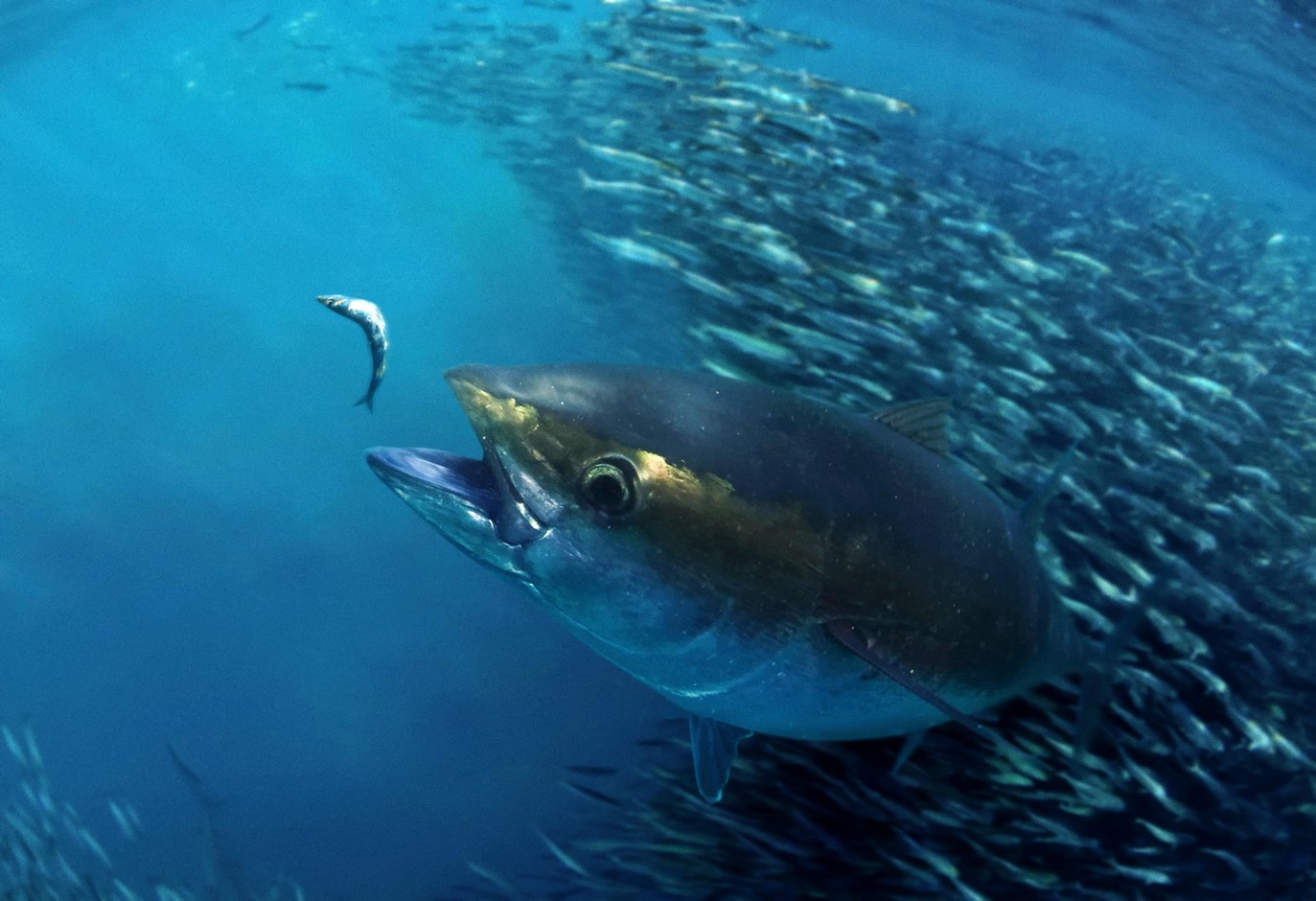
Gallery
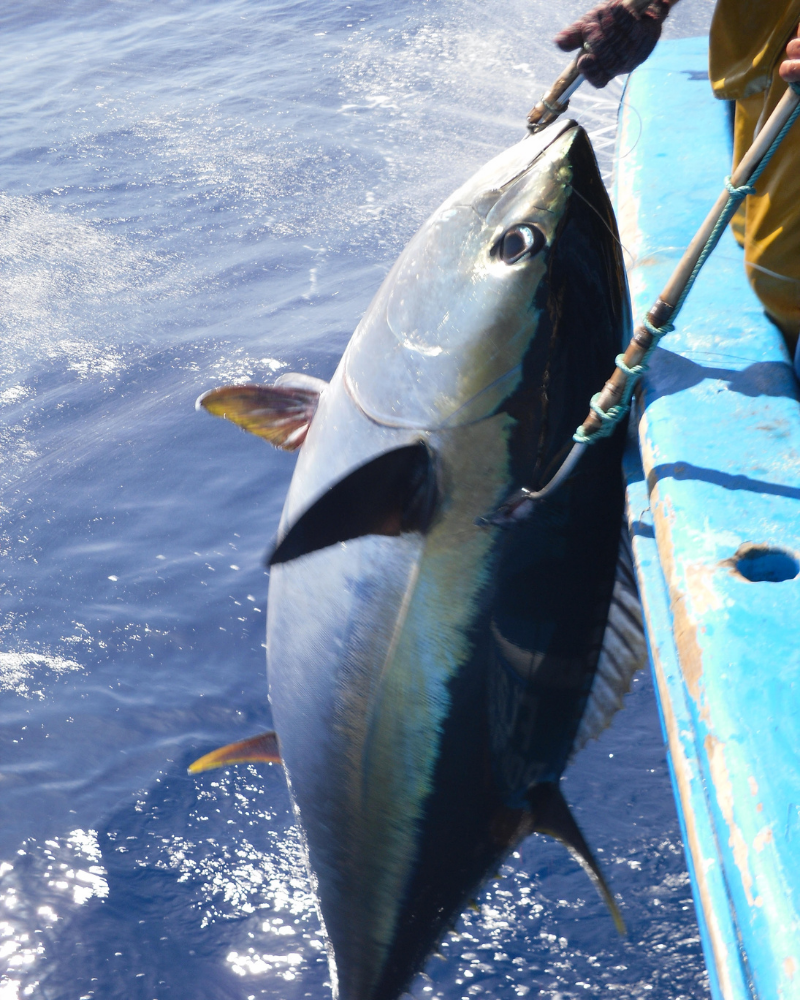
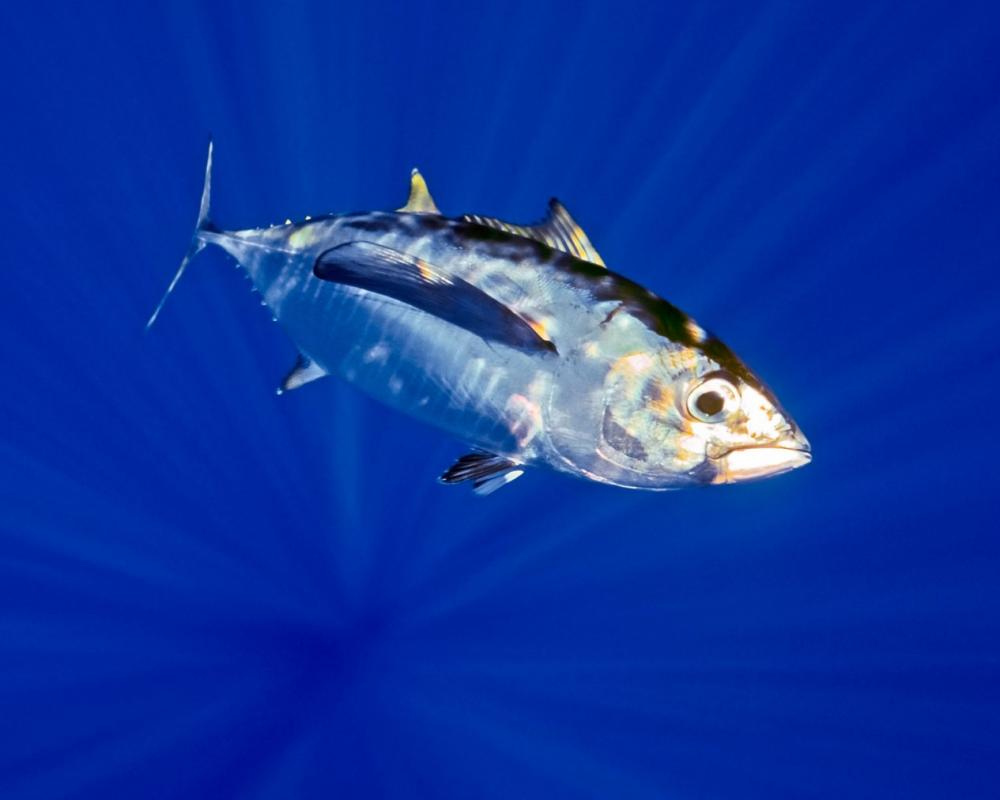


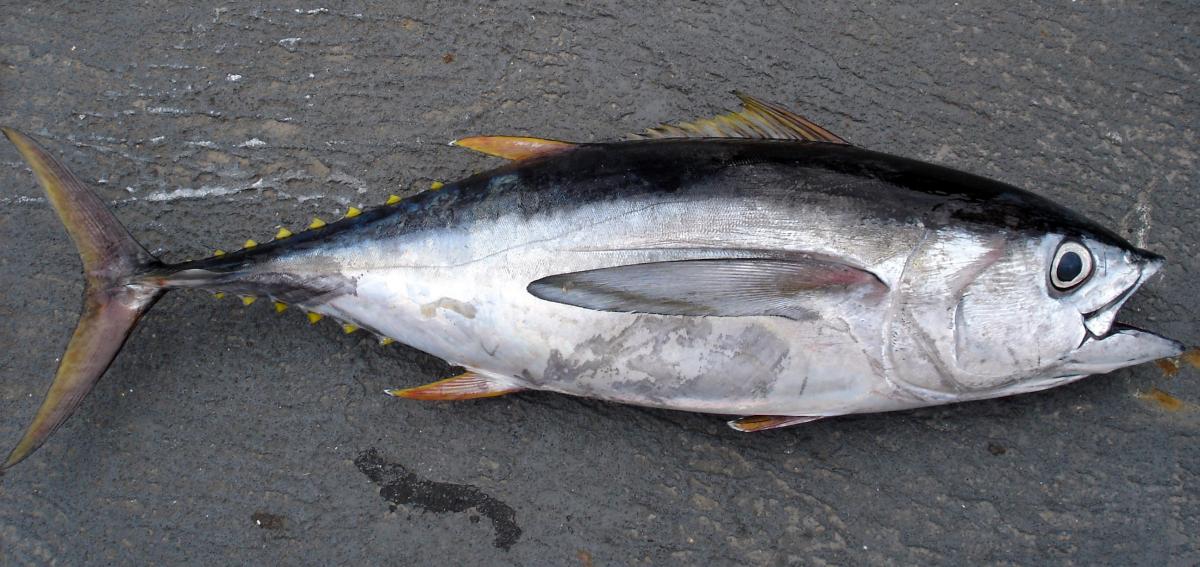
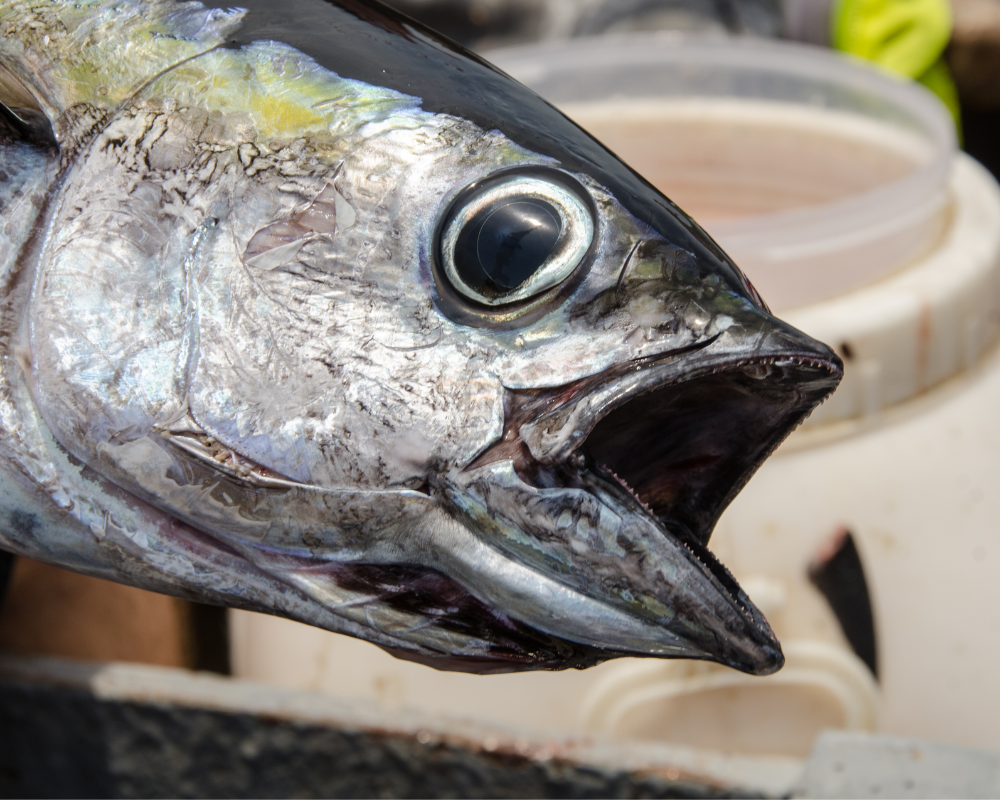
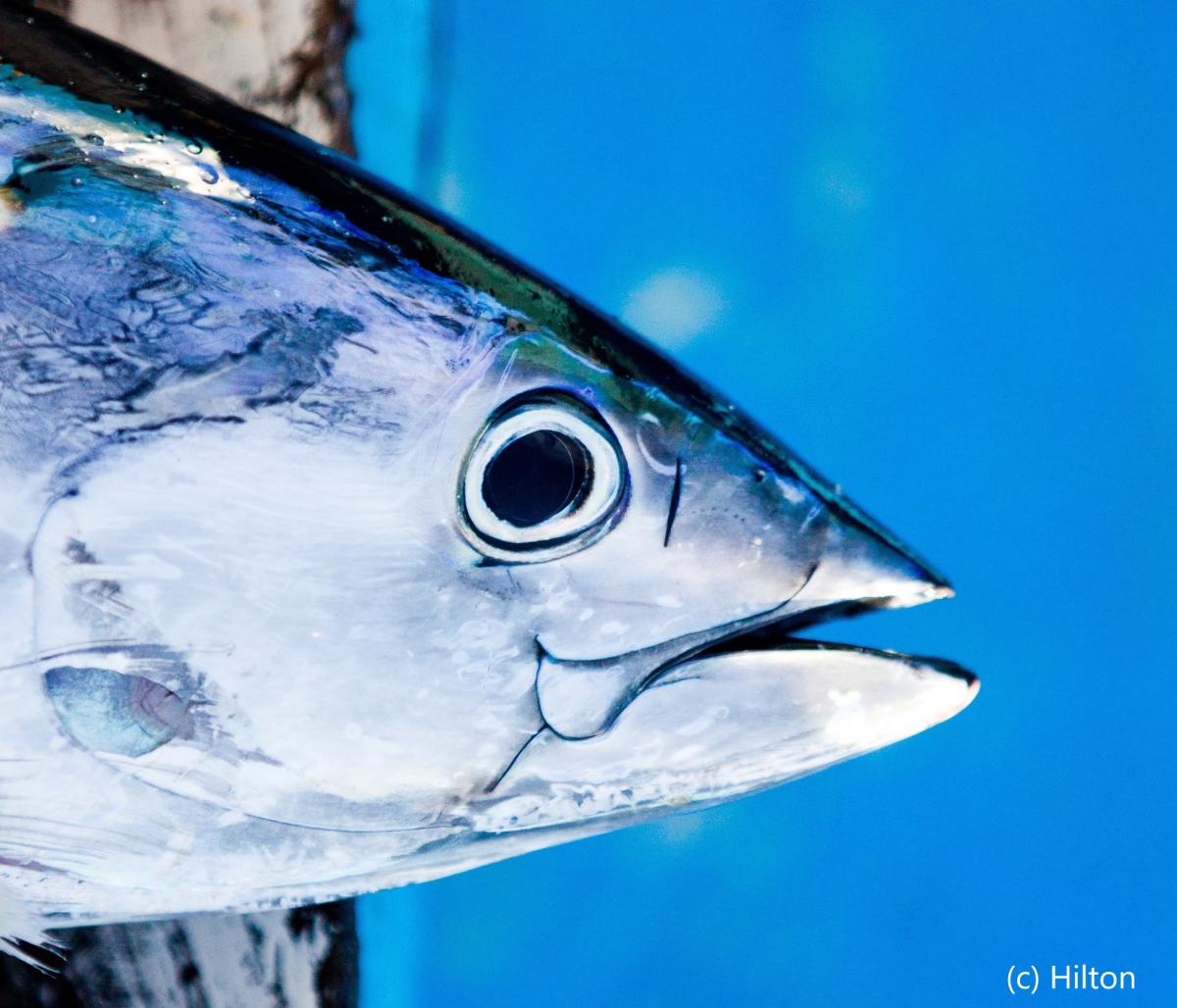
Sustainability
Bigeye tuna is globally classed as Vulnerable on the IUCN Red List. This means that the species is likely to become endangered unless the circumstances threatening its survival and reproduction improve. Global warming has had an impact on the distribution of bigeye tuna schools, which migrate to stay within favourable water temperatures, while tuna fisheries of course also have an impact on this species.
One of the main fishing threats is the harvest of juvenile bigeye tuna. Capturing juveniles increases the harm done to stocks because those fish have not yet reached sexual maturity and contributed to future generations of the species before they are harvested.
It’s not all bad news though and large-scale efforts are being made to ensure the sustainability of fisheries harvesting bigeye tuna. For example, in 2019, IPNLF played an important role in the development and promotion of a tuna stock rebuilding program that’s now being implemented by the International Commission for the Conservation of Atlantic Tuna (ICCAT). This program was set to address the issues of overfishing bigeye tuna stocks and limits the use of dFADs by industrial purse seine fleets across the Atlantic Ocean. IPNLF, its members and the many governments we work with also continue to advocate for management improvements across all the tuna RFMOs we engage.
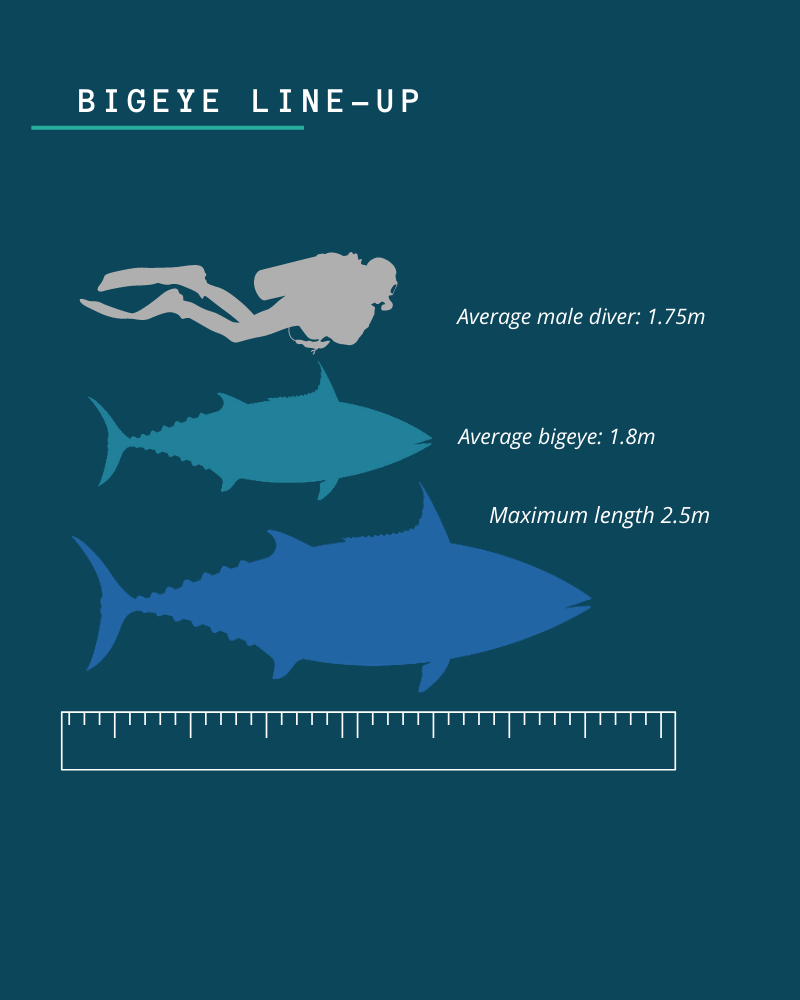
Dive Deeper...
Want to know more about bigeye tuna?
Download the reports to learn more about the environmental status of bigeye tuna.
Bigeye Tuna Fisheries
Seafood
Good quality bigeye tuna meat has a reddish-pinkish colour. Usually caught in deeper, cooler water, it typically has a higher fat content than yellowfin tuna and is preferred by sashimi lovers.
Whilst often consumed rare or medium-rare, other common preparation includes broiling, grilling and sauteing this thick loin. Their cut is often a loin or a round-cut, producing that signature image of a marbled pink cut.
The high-fat content and marbling near the skin give a rich flavour to this cut, and a richer flavour than yellowfin. Like other tuna, the texture is firm and “meaty” with large flakes. This means that it is not often flaked or found canned, unlike smaller fish.
This fish is large and stout, boasting a slice of bright, firm meat with a lot of flavour.
Bigeye tuna is an excellent source of healthy, extra lean protein. It is also low in saturated fat and low in sodium. It is rich in niacin, vitamin B6, vitamin B12, selenium and phosphorus. Bigeye tuna can be a good source of iodine and magnesium while also providing about 500 mg of omega-3’s (DHA and EPA) per 4 ounce serving of fresh fish.



